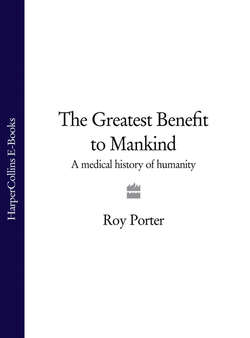Читать книгу The Greatest Benefit to Mankind: A Medical History of Humanity - Roy Porter - Страница 49
CHAPTER VII TRADITIONAL CHINESE MEDICINE
ОглавлениеRather like the Ayurvedic medicine just discussed, traditional Chinese medicine has often been presented as an authentic incarnation of timeless wisdom. Chinese medicine, assert its champions (and occasionally its detractors) has been passed down essentially unchanged since the dawn of civilization. This characterization, along with claims that, unlike western biomedicine, it is holistic and draws only upon mild ‘natural’ substances, is to some extent a propaganda exercise. Even so, the impressive antiquity of Chinese medicine, and its distinctive attitudes towards knowledge of the human body, provide some justification for the contrast. Traditional values and canonical texts were, indeed, highly valued and, unlike the West, novelity has never been prized in the Chinese medical tradition, or for that matter in Chinese thought and culture at large.
While distinctive, Chinese medicine is not totally unlike other medical traditions, and that is partly because it is not wholly indigenous. Over the centuries it has absorbed many outside influences, from India, Tibet, central and south-east Asia, while for the last hundred and fifty years it has been forced to adjust to western medicine. Certain of the key drugs in the Chinese pharmacopoeia were introduced from abroad – ginseng from Korea, musk from Tibet, camphor, cardamom and cloves from south-east Asia, frankincense and myrrh from the Middle East. The needling techniques behind acupuncture may have originated in central Asian shamanic healing. Indian Buddhism brought teachings concerning the soul and salvation which prescribed care for the ill and infirm. Buddhist charms were incorporated into classical Chinese therapy, while, in medieval times at least, cataract surgery was performed which probably derived from India (such operations later lapsed). Indian medical theories are not wholly compatible with Chinese models, however; and though some have held that Ayurvedic or even Greek influences are present in the use of such categories as ‘hot’ and ‘cold’ in Chinese medicine, these are better seen not as borrowings but as transcultural.
While Chinese medicine thus assimilated beliefs and practices from elsewhere, the reverse was happening as well. As the Chinese tongue, Confucianism and Chinese Buddhism were embraced by elites through south east Asia, so too was Chinese medicine. Along with Buddhism, it had been introduced to Korea by the sixth century AD, and Buddhist priests relayed it from there to Japan. (In modern Korea, Chinese medicine is known as hanui: and in Japan as kanpo.) From the sixteenth century, Chinese medicine arrived with migrants to Taiwan, the Philippines and elsewhere – all regions where Chinese medicine flourishes today alongside the western variety.
Alongside herbs such as ginseng and Chinese rhubarb, distinctive features of Chinese medicine, notably moxibustion and acupuncture, became reasonably familiar to Westerners from the seventeenth century onwards: from Japan, the Dutchmen Wilhem Ten Rhyne (1647–1700) and Engelbert Kaempfer (1651–1716) sent home accounts of acupuncture, including maps of the acupuncture channels. Yet this had no noticeable impact upon European medicine, even though after 1800 acupuncture enjoyed a certain vogue, especially in France.
